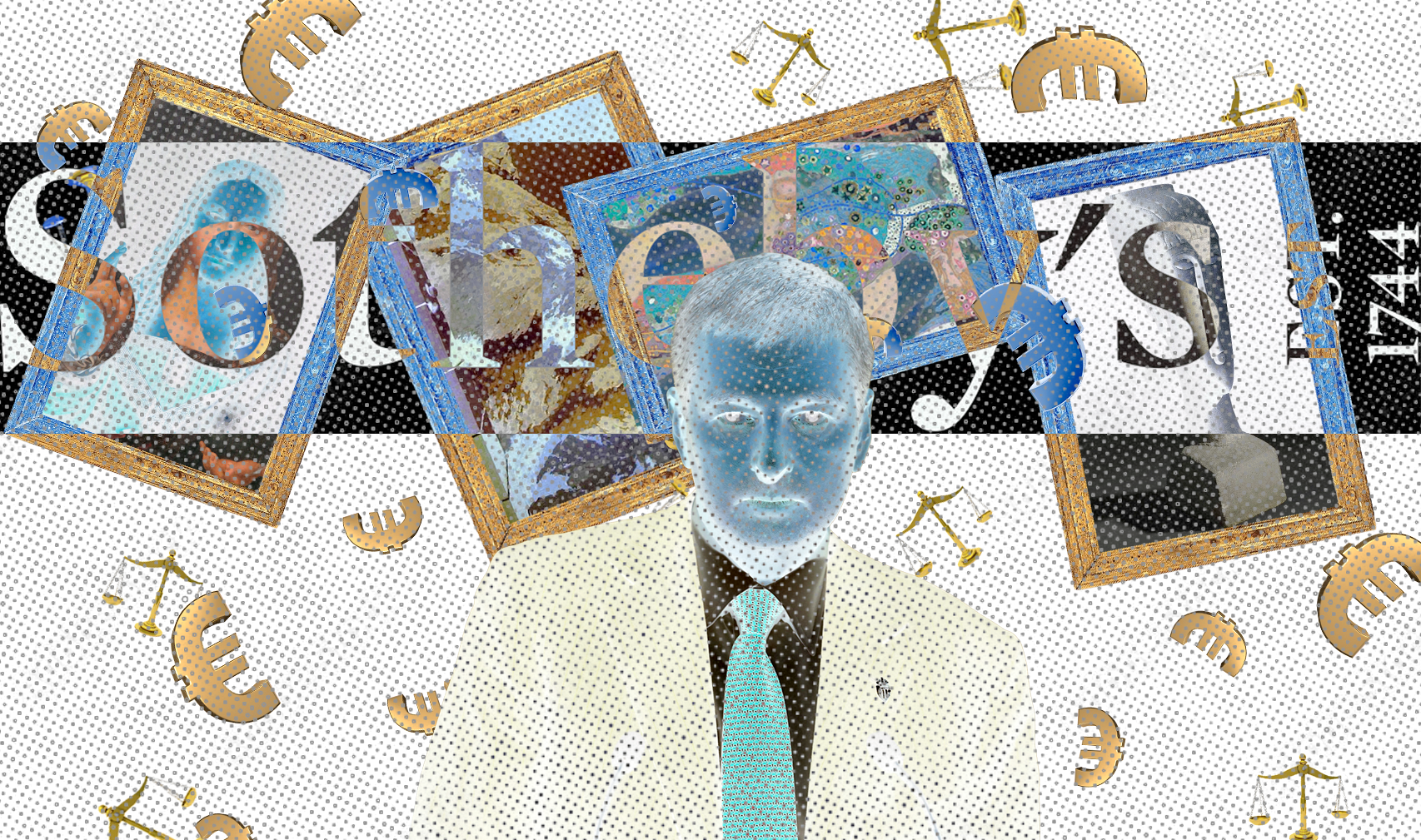
After three weeks of incredibly detailed—and, at times, very tedious—testimony in a New York courtroom, a jury cleared Sotheby’s of aiding and abetting fraud in a closely watched lawsuit brought by Russian billionaire Dmitry Rybolovlev.
Rybolovlev had argued that the auction house had conspired with dealer Yves Bouvier to sell four works—a Leonardo da Vinci, a Gustav Klimt, a René Magritte, and a Amedeo Modigliani—to him at inflated prices. (Bouvier, who was not a defendant in the case, has denied any wrongdoing.)
Following five hours of closing arguments on Monday, the 10-member jury received instructions from the judge this morning and deliberated for five hours before returning with its verdict. Midway through deliberations, it sent a note to the judge asking about Sotheby’s anti-money laundering policies.
There was little reaction in the room when the jury’s decision was announced. Rybolovlev, who turned up minutes before, was quiet and did not show any emotion on his way out of court.
Following the verdict, Sotheby’s lead attorney Marcus Asner, of Arnold & Porter, told Artnet News: “We are thrilled by the verdict and grateful to the jury for all of their hard work and close attention to this matter. This has been a long ordeal for Sotheby’s but it is uplifting that we were vindicated in the end.”
An attorney for Rybolovlev, Daniel Kornstein, said that the “case achieved our goal of shining a light on the lack of transparency that plagues the art market. That secrecy made it difficult to prove a complex aiding and abetting fraud case.”
Rybolovlev had been present in the courtroom for much of the three-week proceedings, sitting quietly next to his legal team and listening intently as a voluminous amount of information was presented. He took the stand early on in the trial, testifying with the help of a Russian interpreter.
At the end of his testimony, when he was asked by his attorney why his extensive business experience had not given him the ability to detect Bouvier’s alleged fraud, Rybolovlev responded that Bouvier “behaves in a way that makes you trust him.” The courtroom went silent as Rybolovlev then became emotional, paused, raised his hand to his forehead, and wiped his eyes, before stating that Bouvier had seemed like a member of his family. “I am not a person who trusts easily,” he said.
The verdict brings to the close a major chapter in a roughly nine-year legal saga that began in early 2015, when Rybolovlev initiated legal action against Bouvier, alleging that he had overcharged him on $2 billion worth of art, across more than three dozen art transactions, to the tune of some $1 billion. In Rybolovlev’s view, the markups crossed the line of accepted market norms into the realm of fraud.
Before the case went to trial, Sotheby’s was able to win dismissal of many of the fraud claims. While the suit previously included allegations that Sotheby’s “aided and abetted Bouvier in committing fraud and breaching his fiduciary duties,” the questions put to jurors today focused only on “aiding and abetting fraud” on the four individual works in question.
Bouvier has been adamant that he was playing the role of agent, and not advisor, for Rybolovlev, leaving him free to charge whatever price he saw fit. In some instances, that meant charging tens of millions more than what he or his holding companies had paid for a work.
Attempted criminal prosecutions and civil actions have played out in jurisdictions around the world, including Switzerland, Singapore, and Monaco. Bouvier and Rybolovlev finally reached an undisclosed settlement in late December. Sotheby’s was dragged into litigation by Rybolovlev for what he said was its role in four art transactions that he alleged made them culpable of “aiding and abetting fraud.”
During closing arguments on Monday, Zoe Salzman, an attorney for Rybolovlev, encouraged the jury to “connect the dots,” saying, “You don’t write to the CEO to ‘engage in a fraud.’” Rybolovlev’s team argued that Samuel Valette, a Sotheby’s senior vice president, had been instrumental in the alleged fraud, providing inflated valuations to Yves Bouvier to help him sell to the Russian billionaire.
Rybolovlev’s team hammered on Valette’s valuations, which were documented in emails, and seized on in-person meetings at presale viewings of the Klimt and the Leonardo (in Vienna and New York, respectively) to argue that Valette knew that Rybolovlev was Bouvier’s client and buyer.
During her closing arguments, Salzman cast doubt on Valette’s recollection of their interactions at those meetings as “minimal” and quipped to the jury that he “loves to talk,” as evidenced by his time on the witness stand.
Sotheby’s rejected those claims, saying that Valette and the firm acted according to industry practice, that no evidence existed of wrongdoing, and that Rybolovlev should have been a smarter buyer, particularly as someone who had been successful in business.
After the verdict, a Sotheby’s rep said in a statement that “there was a glaring lack of evidence presented by the plaintiff and, as has been clear from the beginning, Sotheby’s strictly adhered to all legal requirements, financial obligations, and industry best practices during the transactions of these artworks.”
Salzman accused Sotheby’s of mounting a “blame the victim” defense. “It’s remarkable for a company like Sotheby’s, which has been around for hundreds of years, to ask ‘Why did you trust us?’ ”
Sotheby’s maintained throughout that, while Valette did increase valuations on some works resold by Bouvier, it had no role in marked-up sales prices and that it was unaware of Bouvier’s activities.
Bouvier’s big-ticket deals included charging Rybolovlvev $127.5 million for Leonardo da Vinci’s Salvator Mundi (circa 1500) just days after he acquired it for $83 million. During closing arguments, Asner, the Sotheby’s lawyer, proposed that the billionaire was attempting to have the auction house foot the bill for his own negligence. “It would be simple for Rybolovlev to try to make someone else pay,” he said.